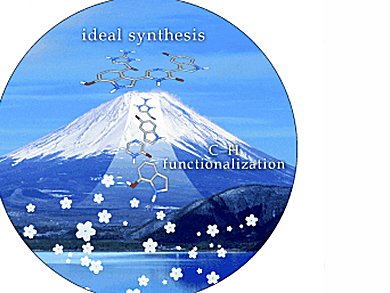The direct functionalization of C–H bonds in organic compounds has recently emerged as a powerful and ideal method for the formation of carbon–carbon and carbon–heteroatom bonds. A growing repertoire of reactions has been reported, including arylation, alkylation, alkenylation, insertion, amination, oxidation, borylation, and halogenation. Despite significant advances in method development, and that it is of no doubt that these methods will be used in the synthesis of biologically active compounds in the near future, the application of C–H functionalization to the synthesis of structurally complex molecules remains a formidable challenge to the chemical community.
Junichiro Yamaguchi, Atsushi D. Yamaguchi, and Kenichiro Itami, Nagoya University, Japan, provide an overview of C–H bond functionalization strategies for the rapid synthesis of biologically active compounds such as natural products and pharmaceutical targets. Almost all the syntheses of natural products and pharmaceuticals that use C–H functionalization are listed and discussed. They are classified according to the formation of carbon–carbon or carbon–heteroatom bonds.
- C–H Bond Functionalization: Emerging Synthetic Tools for Natural Products and Pharmaceuticals,
Junichiro Yamaguchi, Atsushi D. Yamaguchi, Kenichiro Itami,
Angew. Chem. Int. Ed. 2012, 51.
DOI: 10.1002/anie.201201666



